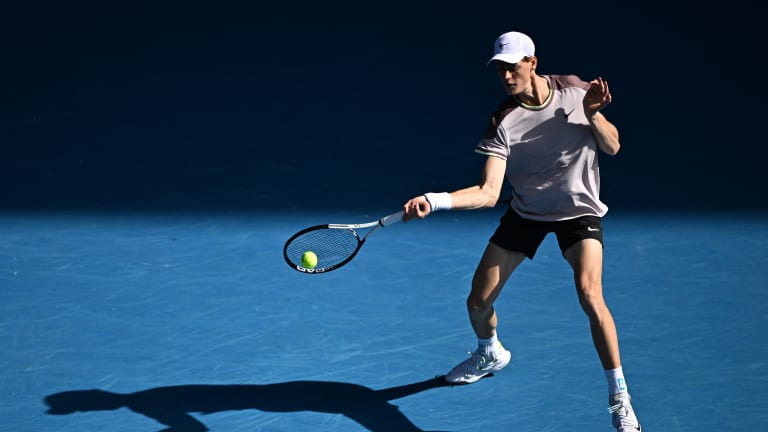Australian Open
GOATs are humans, too: Novak Djokovic’s 33-match Australian Open win streak comes to an end
By Jan 26, 2024Australian Open
Australia at Last: Reflections on a first trip to the AO
By Jan 29, 2025Australian Open
Alexander Zverev must elevate his game when it most counts—and keep it there
By Jan 27, 2025Australian Open
Jannik Sinner draws Novak Djokovic comparisons from Alexander Zverev after Australian Open final
By Jan 26, 2025Australian Open
Alexander Zverev left to say "I'm just not good enough" as Jannik Sinner retains Australian Open title
By Jan 26, 2025Australian Open
Jannik Sinner is now 3-0 in Grand Slam finals after winning second Australian Open title
By Jan 26, 2025Australian Open
Taylor Townsend and Katerina Siniakova win second women's doubles major together at the Australian Open
By Jan 26, 2025Australian Open
Madison Keys wins her first Grand Slam title at Australian Open by caring a little bit less
By Jan 25, 2025Australian Open
Henry Patten, Harri Heliovaara shrug off contentious first set to win Australian Open doubles title
By Jan 25, 2025Australian Open
Aryna Sabalenka takes a rare loss in Australian Open slugfest
By Jan 25, 2025Australian Open
GOATs are humans, too: Novak Djokovic’s 33-match Australian Open win streak comes to an end
When was the last time Novak lost a match at a major in this fashion? On Nole's "subpar" play and Jannik Sinner's big win.
Published Jan 26, 2024
Advertising

Djokovic didn’t earn a single break point against Sinner. “It plays with the mind of your opponent,” Djokovic said, “meaning you can put more pressure on his service games, my service games in this case, and you kind of swing freely.”
© AFP or licensors
Advertising
Advertising

Prior to Friday, Djokovic's last Australian Open defeat came in 2018. “Everything, you know, was just subpar,” the Serbian said of his performance.
© AFP or licensors
Advertising

GettyImages-1953502652
© AFP or licensors